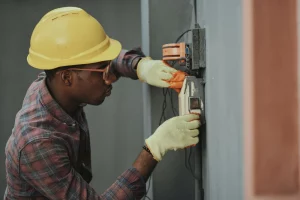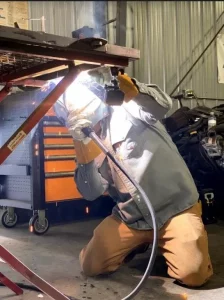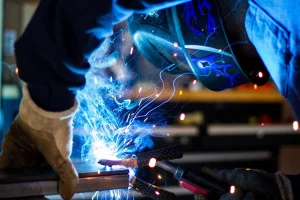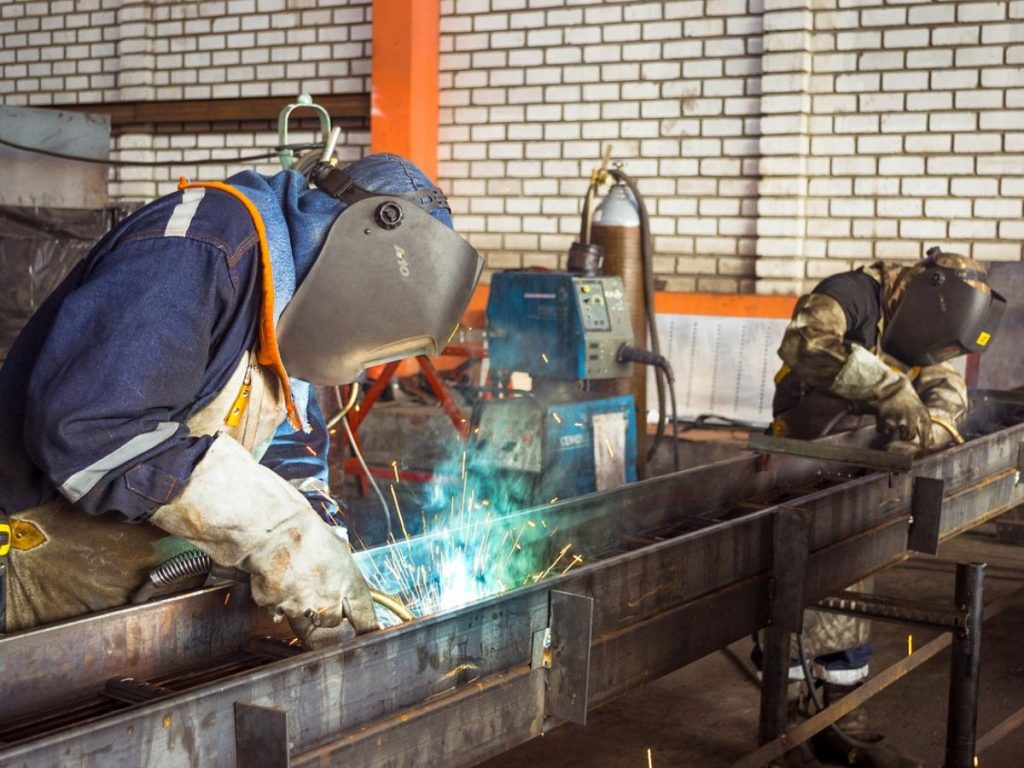Choosing the right welding voltage or amperage is critical for the success of your project. Voltage and amperage have different effects on weld surface and penetration, and too much or too little will result in flat or concave welds, or worse yet, no fusion at all.
What is amperage in welding?
Amperage is an important aspect of welding. Using a higher amperage increases the heat generated and increases the penetration of the metal. The higher the amperage, the more options you have for welding. However, you should be aware that the amount of heat generated by the welding process is limited.
Amperage can be thought of as the total number of electrons that flow through a wire at a specific speed. It is measured in volts. One hundred volts equal one kilowatt. Similarly, a thousand volts equals one million kilowatts. Both terms are used to describe the amount of electricity flowing through a wire or arc.
The right amperage depends on the thickness and type of material you’re welding. For example, a 1/8-inch 6010 rod will run at about 75 to 125 amps, while a five-32-inch 7018 rod will run at two hundred amps. The operating ranges of electrodes are usually indicated on the side of the electrode box. You can also determine the amperage for a particular weld position. For example, a curved weld will use fifteen percent less amperage than a flat weld.

What is welding voltage?
Voltage is an important parameter to know when welding. The amount of voltage depends on the material being welded and its surface area. Too much voltage will result in a flat weld, while too little voltage will result in a ropy bead. Too much voltage may also cause a lack of fusion. Advanced welding techniques, such as pulse welding, can help control voltage more precisely. These techniques allow for the adjustment of voltage during the welding process, resulting in more consistent and high-quality welds. With advanced welding techniques, welders can achieve better control over voltage to ensure optimal welding results.
There are two basic types of voltage: direct current and alternating current. Direct current is the most common. This type of power flows in one direction and does not reverse. This type of power is typically supplied by a transformer. The negative electrode is connected to the negative terminal, and the positive electrode is connected to the positive terminal. This form is sometimes referred to as direct current, reverse polarity, and is also called alternating current.
When welding, alternating current (DC) and voltage can be used to control welding processes. The higher the voltage, the greater the power of the arc. Increasing voltage will increase the power of the arc, but the amperage will decrease. The actual response to voltage will vary based on the power source.
Welding amps per thickness of common types of meta
The amount of welding amperage needed to produce a weld depends on the thickness of the metal being joined. Generally, one amp of power per 0.001 inch of thickness is required. However, this number may vary depending on the type of metal being welded. For example, stainless steel requires a minimum of ten to fifteen percent less power than aluminum. A safe starting point is 125 amps of current for welding 1/8 inch mild steel.
Generally, thin materials cool down much more slowly than thick materials due to their coarse grain structure and lower meta-stability phases. On the other hand, thicker base metals cool off more quickly due to their steeper temperature gradient and lower heat transfer. The latter will result in less warpage.

Difference between adjusting Amperage vs Voltage?
Welders adjust Amperage to increase the penetration of their welds. The amount of amperage a welder uses depends on the type of welding that they are doing. The higher the amperage, the more penetration a weld will have and the thicker the material can be. However, you must ensure that you have enough voltage to support the increased amperage.
Setting the voltage too high can result in a bad weld that looks ropey. It can also lead to an undercut or a concave bead shape. The right amount of amperage and voltage will create a good weld profile while avoiding the problems associated with overheating.
Although voltage has very little effect on penetration, it has a profound effect on the shape and profile of the weld. In some situations, it may even cause excessive reinforcement of a weld. This is not very useful and will end up costing you more money and labor. Worse, such welds may fail many codes, including fatigue loading.
The advantages and disadvantages of Amperage weld
Amplified welding is often characterized by higher weld toughness, but it also has its drawbacks. It produces a weld puddle that is often slow to form and can generate additional spatter. In single-pass applications, phosphorous and sulfur can affect weld toughness because they mix with the base metal. To minimize these negative effects, use filler metals with low sulfur and phosphorus content.
The advantages of amplified welding include reduced operator fatigue. It has the potential to produce more consistent welds because the operator sways his arm instead of his wrist. The disadvantages of amplified welding include higher weld penetration and increased risk of root reinforcement.
The advantages and disadvantages of amplified welds vary depending on the material and thickness of the welding material. For a high-quality weld, be sure the amps are set properly. Otherwise, the amps could burn through the material. Also, make sure the welding torch is properly positioned. If it’s not in the right position, it may cause porosity.
The advantages and disadvantages of Voltage welding
Depending on the type of welding process, you may find it helpful to compare the advantages and disadvantages of various voltages. For instance, resistance welding can be less expensive than arc welding, but it also produces RF interference. In addition, there are losses in welding transformers and the control system is complicated. Another disadvantage of voltage welding is that the structure of the electrically welded joint does not match that of its parent metal. Moreover, it is associated with hazardous radiation and light fumes. Lastly, it is difficult to detect the extent of penetration due to internal air pockets.
In arc welding, direct current (DC) is the preferred method of welding. This type of welding uses an electrode that is made of tungsten to create an arc that delivers electricity into the material being welded. The advantage of DC welding is that it can be used for joining different types of metals and can operate in any position. Despite its disadvantages, this type of welding is still the most common type.

Do you have questions on amperage and voltage?
When you’re welding, you need to determine how much amperage and voltage you need. The right amperage and voltage will depend on a few key variables, such as the welding process, the base material, and the type of electrode you’re using. You can learn more about these factors online, in libraries, or at welding supply stores.
Amperage and voltage are two important welding parameters that can make or break a weld. They control the amount of metal that is deposited during the welding process. The higher the amperage, the deeper the weld will penetrate the base material. Likewise, too low an amperage can result in a weld that is flat or concave.
When using a MIG welder, you should choose the correct amperage for the job at hand. If your welding machine doesn’t have enough amperage, your weld may not be able to generate enough heat to melt metal. In addition, if the voltage is too high, you may end up with a concave or undercut weld. The main goal is to balance the heat and power input of the process.
Conclusion
Understanding voltage and amperage in welding is essential for safe, productive welding. Welding voltage varies depending on arc length and arc current. Constant voltage is the default setting for most welding equipment. When the arc length is constant, the voltage remains constant and the amperage increases proportionally. Constant current is an alternate welding voltage characterized by a constant current and voltage. It is used in continuous wire feeding processes to reduce the risk of wire “stubbing” into the weld puddle or short-circuiting the equipment.
Besides voltage, amperage and duty cycle are also important factors in welding. The right amount of current is needed to penetrate the workpiece without burning the base metal. Higher currents will result in deeper penetration. The right amount of current also depends on the size of the electrode. A higher current will result in a thicker weld bead, while a higher voltage will reduce the thickness of the bead.
In direct current, the negative electrode has the highest deposition rate. In alternating current, the negative electrode contributes the most heat. As the welding current increases, the deposition rate increases as well. A longer “stickout” (the point where the current enters the electrode and creates an arc) increases deposition rate. However, a longer stickout means poorer penetration.

